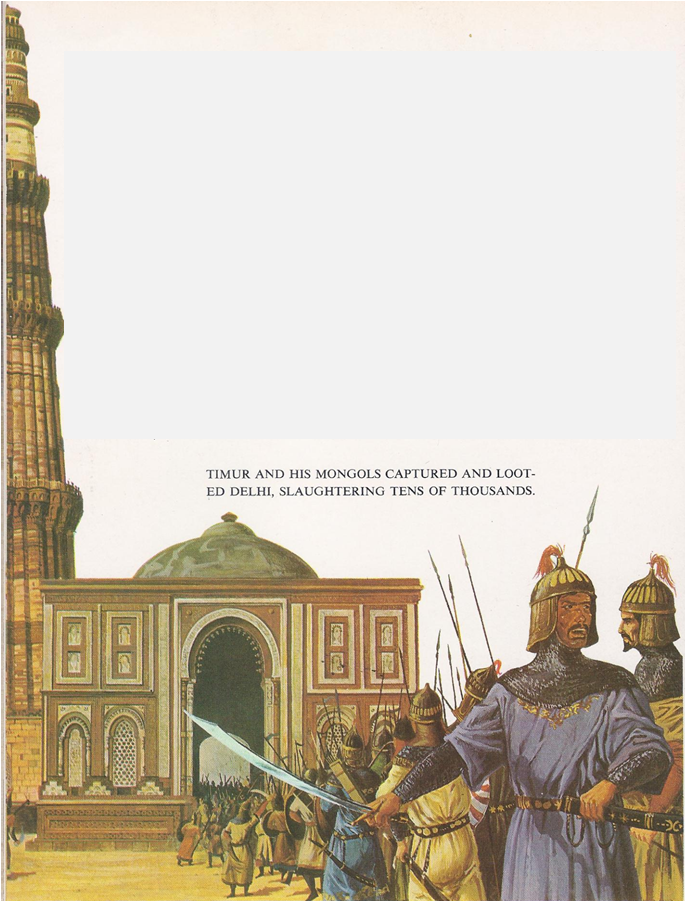The date was July 8, 1853; the place, Yedo, a sprawling collection of wooden houses overlooking an arm of the Pacific Ocean. Yedo, later known as Tokyo, was the chief city of the Japanese islands, off the east coast of Asia. It was larger than London or Paris, but since Japan had been out of touch with the rest of the world for centuries, few foreigners knew it. Yedo was also the residence of an official called the shogun, who theoretically governed the country in the name of the emperor. As they stared out at the bay that day, the …
Read More »Tag Archives: Buddhism
Two and a Half Centuries of Unrest in Japan A.D. 1336-1573
Go-Daigo had found refuge in a place in the mountains called Yoshino. Japan now had two emperors, one in Kyoto and the other in Yoshino. Takauji set out to simplify matters. As a first step, he had his puppet, the Kyoto emperor, appoint him shogun. In this way, Takauji became the founder of a new line of shoguns who were called, after their family name, the Ashikaga shoguns. Their shogunate lasted from 1336 to 1573, nearly twice as long as the Kamakura shogunate. Takauji and his successors did not rule anywhere near as firmly as Yorimoto and the Hojo family. …
Read More »Japan’s Change and Slow Growth A.D. 838-1150
BETWEEN THE ninth and twelfth centuries, Japan developed at a slower pace. It was as if the people knew that they needed time to digest what they had learned. After 838, the government sent no more official missions to China. The Japanese continued to value Chinese civilization as highly as ever, but they went about things in their own way. Slowly, Japan became thoroughly Japanese. Prince Shotoku’s dream of a strong central government had come true. In time, however, the same evils that plagued Chinese dynasties in their later stages began to plague Japan. Thanks to their high positions at …
Read More »Becoming a Nation 660 B. C.-A. D. 587
DRAWING ON nature for inspiration, the Japanese invented a number of gods and goddesses. They took it for granted that their islands and their ancestors had been created by gods. Many different stories were told about how these things had happened. The official account of how Japan got started was finally laid down in 720, in a book called Nikon Shoki, or The History of Japan. This book, written on the orders of the emperor, was a hodge-podge of myths and family trees, with a little recent history thrown in. Its authors were trying to please their imperial master. T …
Read More »The Six Dynasties: Turmoil and Change A.D. 220-589
THE three states into which China had split were soon split up themselves into even smaller divisions. For three and a half centuries, war raged almost continuously among rival kings. Doubt and confusion were everywhere. The period between 220 and 589 is called the Six Dynasties era, after six ruling families in a row which used Nanking as their capital. In all those years‚ the memory of the Han Empire never died. Looking back longingly at the peace and order of that time, the people came to think of the Han government as the great model which all rulers should …
Read More »The Coming of Islam A.D. 711 – 1526
IN 711‚ when other Moslem forces were invading distant Spain, Arab soldiers fought their way to the mouth of the Indus River and captured the area called Sind. There they stopped. Nearly three centuries passed before Moslems again menaced India. In 998, a Turk named Mahmud, the amir of Ghazni in Afghanistan, burst through the Khyber Pass with an army of Turkish horsemen to sweep across the Punjab in the first of seventeen raids. Not even the savage, pagan Huns had been as bloodthirsty as these civilized sons of Islam. They hated the Hindus with a special hate. Believing in …
Read More »India: A Thousand Years of History A. D. 1 – 710
UNTIL 1947, when the Moslem state of Pakistan was carved out of its western and eastern corners, the entire triangle of land that points south from the Himalaya Mountains into the Indian Ocean was known as India. Geographers call this huge land mass a subcontinent, because it is almost completely cut off from the rest of the continent of Asia. The Himalayas on its northern frontier form a continuous barrier of rock, the highest in the world. “MOTHER GANGES” From the southern slopes of the Himalayas, two great rivers run down to the ocean. The valley of the Indus River, …
Read More »





